- Home
- Lawrence Block
The Crime of Our Lives Page 4
The Crime of Our Lives Read online
Page 4
Woolrich wrote his best books early on, starting with The Bride Wore Black in 1940.
The most noteworthy aspect of my list, it seems to me, is the number of significant writers I’ve had to leave out. I could easily have included a dozen more. If I were fool enough to include living writers, I’d have had to write a book. Because, for all the talk one hears of the mystery’s vintage years, I think it is abundantly clear that the very best crime fiction ever is being written today. These are the good old days, and a very real reason for the huge popularity of mysteries is that the genre is in its Golden Age. Many of the very best writers alive are writing crime novels, and they are doing extraordinary things within the genre, things no one has previously attempted.
If there’s a lot of wheat, surely there’s no end of chaff. I suppose 90 percent of what’s being published today is nothing special, but when was it ever otherwise? The good stuff, I assure you, is very good indeed.
You’ll excuse me, I hope, if I decline to point it out to you. But think of the fun you’ll have digging it out for yourself!
Edward Anderson
* * *
An introduction to a 1986 edition of Thieves Like Us:
There is a scene in Bonnie and Clyde that lingers in the mind. The two bank robbers are holed up in a tourist cabin. They are in bed together, aglow in the aftermath of lovemaking. As Bonnie Parker, Faye Dunaway had tended to romanticize the two of them, seeing them as Robin Hood types and as star-crossed lovers. “If we had it to do all over again,” she asks, “would you do anything differently?”
Warren Beatty’s Clyde Barrow considers the matter. “I’d do a lot of things differently,” he tells her. And he goes on to explain that, for one thing, he’d never rob banks in the same state where they lived.
While he is telling her this, we see Dunaway’s face. And for an instant she registers the recognition that this guy is, when all is said and done, just a zhlub, and the two of them are not indeed a road company Romeo and Juliet, and that if this turkey had it to do all over again, he’d do it all over again. There is that instant, and then she pushes all this new knowledge out of her mind and they are together again.
In Thieves Like Us, the lovers have few illusions. Bowie and Keechie never assume heroic proportions in their own or each other’s eyes. Bowie treasures her because she is a “little soldier,” what a more urban crowd would call a stand-up broad. She, having made her choice, elects to stand by her man. She thinks they ought to be able to hole up in the hills forever, and he has fantasies about retiring to Mexico, but they both know what we know—that there is only one way out of this maze.
Thieves Like Us was published in 1937, at a time when bank robbery was an attractive profession in the American Midwest. The automobile had given thieves a technological advantage with which the law had not yet caught up. With the Dust Bowl reeling under the Depression and the country closer to some form of class revolution than it has ever been before or since, the bank robber attained instant celebrity; if he was not necessarily idolized as a hero, he was at least perceived as an ordinary Joe trying to make a living.
Edward Anderson captures wonderfully the ordinary quality of criminals. Bowie and T-Dub and Chickamaw are neither the exploited downtrodden souls of typical proletarian novels of the period or the warped misfits of more psychoanalytically oriented fiction. Crime is how they make money, and they make as lot of it quite easily. (T-Dub and Chickamaw can’t hold onto theirs. Bowie can, but gets little joy out of it.) They see themselves as working men whose work is robbery, and see everyone in the straight world—lawyers, politicians, businessmen, Wall Street capitalists—as “thieves like us.”
One suspects Edward Anderson knew the folks he wrote about. Born in Texas in 1906, he grew up there and in Oklahoma, where he worked on newspapers. Between jobs as a reporter he shipped out on a freighter, boxed, and played the trombone. He tried fiction, and after a few sales to sports and adventure pulps, he spent three years riding the rails, hoboing across America in the early years of the Depression.
In 1934 he was off the road, married in New Orleans, and writing fiction again. The following year his first novel, Hungry Men, won a Story magazine prize and was published. An engrossing and marvelously authentic novel of men on the bum, it derived directly from Anderson’s own experiences.
Before he wrote Hungry Men, Anderson wrote about criminals for the true-crime magazines. He made fictional characters of them in Thieves Like Us, and the book was very well received, with at least one critic grouping him with Hemingway and Faulkner. His career could hardly have looked more promising, and there seemed little danger that the man would run out of things to write about, or that readers would tire of prose and dialogue that was as flat as the prairie and as clear as the open sky.
Astonishingly, Thieves Like Us was Anderson’s last published fiction. He went out to Hollywood, worked for a couple of the studios, but didn’t like it. (What a surprise!) He returned to journalism, worked in California and Texas, and ultimately edited a paper in Harlingen, Texas. He wrote more fiction but never sought to publish it, lived to be sixty-three years old, and died essentially forgotten by the world of literature.
We always wonder why a writer stops writing. I sometimes think we should marvel more at those who don’t stop. In Edward Anderson’s case, one wishes for an explanation, and asks in vain; one might as well seek to know why Bowie robs banks, or why Keechie stays with him.
Still, that doesn’t stop me from wondering. And I wonder, too, what those stories were that Edward Anderson wrote but never published. Did he destroy them? Were they consigned to a bonfire after his death? Or are they even now reposing in some attic in East Texas, waiting for someone to discover them?
Time will tell. For now, Edward Anderson has left us two small masterpieces which, half a century later, have not a single false word between them. And that’s not bad for a country boy.
Fredric Brown
* * *
An introduction to Dennis McMillan’s small-press edition of The Case of the Dancing Sandwiches, 1985:
The question was straightforward enough. Would I care to write an introduction to an unfinished and previously unpublished Fredric Brown novel? My answer came without hesitation. Of course, I said. I’d be delighted.
Doubt came later. What, I wondered, could I possibly find to say? I’m by no means an expert on the life or work of Fredric Brown. Since I first discovered him in the mid-1950s, I believe I’ve read everything of his that appeared in book form. But most of that reading was done a quarter of a century ago. I’ve reread a handful of the novels in recent years—The Fabulous Clipjoint, The Screaming Mimi, Night of the Jabberwock, The Wench is Dead. I can testify that they hold up better than much of what I was enthusiastic about twenty-five years ago, although they don’t seem quite as wonderful as I remember them.
But I’m quite unfamiliar with the great mass of Brown’s uncollected pulp fiction. I know precious little about his life, never met the man, and although I must have seen a photo of him at one time or another, have no sense of what he looked like.
Nor do I know any of the particulars of the novel-in-progress I’m supposed to be introducing. I don’t know what Brown had in mind when he started it or what induced him to abandon it, or if he had hopes of returning to it and completing it.
So where do I get off writing an introduction?
On the other hand, how could I fail to agree? Fredric Brown was one of the writers in whose work I immersed myself at the time when I was not only deciding to become a writer but determining what sort of writer I was going to become. When the student is ready, we are told, the master will appear. Brown was one of several masters who made their appearance at a time when I was evidently ready. They taught by example, and I learned as much as I was able to learn. And what a fine time I had of it!
Thus this introduction, such as it is. Perhaps it will be rather less an introduction than an appreciation. And, at the same time, something o
f a thank-you note.
What a fertile mind Brown must have had! When I first read his collected short stories, I was struck by how many of them I have already encountered in anthologies. There was something special about almost all of his stories, some quality that made them linger in the mind.
I can recall a surprising number of those stories after all these years. The one that comes quickest to mind is “Don’t Look Behind You,” which I’ve always found scary in a way that is categorically different from all other scary stories. Typically, the scary story works because one forgets while reading it that one is reading fiction. The work becomes real, the reader ceases to remember that he is a reader and becomes either a character or a spectator, and whatever fear is generated dissipates when one realizes that it is, after all, only a story.
But Brown lets you know that you’re reading a story, and takes pains to remind you that you’re sitting there with a magazine in your hand, and scares you anyway. Yes, you’re the reader, he says, and I’m the person who wrote this, and I’m behind you right now, with a knife. Hi there!
I never met Fredric Brown, but I certainly would have liked to. Most writers, I suspect, are a face-to-face disappointment to their fans. The reader creates his own sense of the writer’s personality, while the writer, for his part, has been busy putting the most attractive elements of himself into his work. The better a writer he is, the more artfully distorted an image he may wind up presenting of himself.
Nevertheless, one senses that Brown would have been good company. His characters were such good company. They liked to fish, they liked to play poker, they liked to jaw the night away.
And they liked to drink. God, did they like to drink! I read most of Brown’s books during that part of 1957-8 when I was living in Manhattan and working at a literary agency while writing stories for what crime pulps still existed. My hotel was the Alexandria on West 103rd Street, just two doors from the Marseilles where Cornell Woolrich (whom I never met either) was living out the end of his curious life.
One Friday night I brought home Murder Can Be Fun and a bottle of Jim Beam. I hadn’t quite planned it that way, but whenever the lead character took a drink, so did I. Thinking back on it, it’s a miracle I lived to tell the tale.
I liked the way Brown’s characters thought and acted, and I liked the sense of their author that came through them—or came directly, when Brown talked straight to the reader. (I don’t do that often, but it was a voice I used in some early pseudonymous work, and I know I learned it from Brown.)
I liked, too, the things that interested Brown. He had the sort of fantasies I was eager to share. I liked the newspaper backgrounds, the carnival backgrounds, the knack Brown had of taking a gritty world and peopling it with unjaded human characters. I identified with Ed Hunter, teamed with the perfect fantasy uncle to investigate his father’s murder, in a wonderfully shameless interpretation of Hamlet. (My own attempt at a first novel, mercifully aborted around forty pages, was a similarly shameless recreation of The Fabulous Clipjoint.) And I wanted to follow in the footsteps of the hero of The Wench is Dead, a sociology professor spending his sabbatical incognito on Skid Row and ultimately seduced by life at the bottom.
Fredric Brown’s books opened windows into such alluring worlds!
And what of the book at hand?
We have here two phenomena—a novella, first published in a curious paperback format and long out of print, and an unfinished attempt to spin that yarn into a book-length novel. The novella version of The Case of the Dancing Sandwiches surely needs no introduction. Its author’s imprint is unmistakable, and while few readers would likely argue that it was the best thing Fredric Brown ever wrote, neither was it the worst. The dialogue is lively, the characters richly human, and the story itself involving.
And what of the expanded version?
It is a curious business, taking a short work and stretching it. Interestingly enough, I am engaged at that very task even as I prepare this introduction. A story of mine ran in Playboy last year, and I am now extending it from eight thousand words to novel length.
I am finding this to be rather more than a matter of putting nine or ten words where one word stood, of running scenes longer, of taking time to describe settings. One might double the length of a manuscript in that fashion, but a greater expansion is called for in the present instance, and so I have added two full plot elements to the one which ran through the short story, have created and developed a number of characters who did not exist in the original, and am essentially attempting to build a whole twelve-room house around an old log cabin.
[The short story in question, I’ll now add, is “By the Dawn’s Early Light”; the novel is When the Sacred Ginmill Closes.]
Brown’s novel-length version of Dancing Sandwiches would have inflated the story to three or four times its original length. Toward that end, he added some scenes and expanded others, but what we have here of the story line isn’t greatly altered. It’s interesting, I think, that he moved his story south and west, from New York to Arizona. Perhaps he simply wanted to set the new version where he lived; perhaps he felt that a change of scene would make the process of expansion easier, that it would be easier to write whole new scenes in new settings than to stretch scenes he had already envisioned and written.
It seems to me that a plot which worked nicely in its shorter version appears on the thin side as a novel. I suspect that, had Brown initially set out to write the story as a novel, it would have grown organically, with incidents and plot complications developing en route. The process of organic growth doesn’t come as automatically when one is expanding an existing work, and I think that does much to explain the thinness of the unfinished novel.
On the other hand, it’s important to remember that the work is indeed unfinished, that we can’t know what it might have looked like had Brown completed it. Perhaps he would simply have pushed on to the end. Perhaps he abandoned the book when he did out of the sense that it needed some structural reinforcement in order to carry the greater length.
Occasionally a piece of writing, left unfinished at death, is completed by another writer. (I once performed this service, if that is what it was, for William Ard, and I understand that more than a few posthumously published works have had this treatment, acknowledged or otherwise.) John O’Hara, I know, recoiled at the thought of another hand finishing a work of his; while this did not happen, unfinished and inferior work of his was published after his death, and one cannot imagine that he would have approved.
And what would Fredric Brown think of the present volume? I can’t say, but I certainly don’t think there’s anything here for which his shade need apologize. There is good writing here, and good characters; moreover, the scholar has the rare opportunity to overlook the creative process as a piece of material is altered from one form to another.
Remember What Mad Universe? Imagine, if you will, a parallel world in which Fredric Brown still lives—and still writes. There’s a whole shelf of books and stories of his that none of us have laid eyes on. Including this present story, its original plot elaborated and complicated, the whole work completed and polished and with an ending you wouldn’t dream of in a million years.
Just imagine—
* * *
For my 1999 anthology, Master’s Choice, select writers were invited to submit two stories, a favorite by another writer and a favorite of their own. Having invited myself to the table, I chose a story of Fredric Brown’s, and one of my own to keep it company:
Fredric Brown was a purely wonderful writer, producing a substantial body of distinguished work in two genres, crime and science fiction. Reading his work, I’ve always been struck not only by the deceptive ease of his writing style and the startling originality of his ideas, but by the sense of the human being behind the work. It is one of my regrets that I never got to meet him.
When I began writing crime stories in the late ’50s, Brown was one of the writers I devoured. I read everything I
could get my hands on and found something to like in everything I read.
“Cry Silence” is one of the stories I read back then, over forty years ago. I never read it again, but I damn well remembered it, and managed to hunt it down in a friend’s library the other day. There aren’t many stories I recall so vividly after such a lengthy passage of time, but there are a few, and several of them had Fredric Brown’s name on them.
“Sometimes They Bite” was written in 1975, during a month I spent at Rodanthe, on North Carolina’s Outer Banks. There was a long pier there, and you could go out on it with a pole and fish, and that’s what I did. I lived pretty much exclusively on what I hauled out of the ocean, and one day I wrote this story. Henry Morrison, my agent at the time, called a friend of mine and said he was worried about me. “I got this story from Larry,” he said. “I’ve got a feeling he’s been alone too long.”
I don’t know that the story owes anything to “Cry Silence,” or to Fredric Brown, but I like to think it’s one he might have enjoyed.
Raymond Chandler
* * *
Commissioned by GQ for their December 1994 issue, presumably to coincide with the centenary of Chandler’s birth. Except the editor got it wrong; It was Dashiell Hammett who’d been born in 1894, six years after Chandler’s 1888 debut. I thought it over and wrote the article, and they ran it, and I don’t know that anyone ever complained.

 Tanner on Ice
Tanner on Ice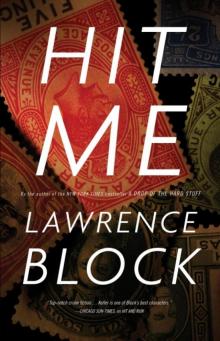 Hit Me
Hit Me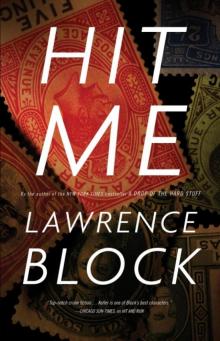 Hit and Run
Hit and Run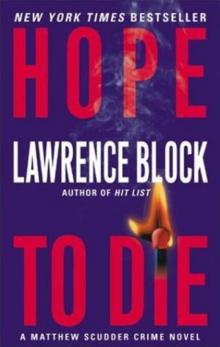 Hope to Die
Hope to Die Two For Tanner
Two For Tanner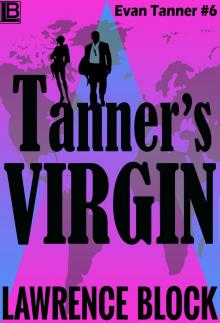 Tanners Virgin
Tanners Virgin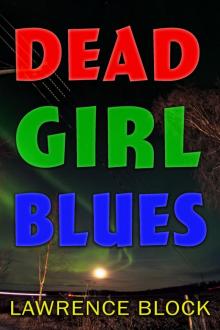 Dead Girl Blues
Dead Girl Blues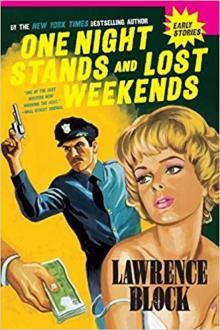 One Night Stands and Lost Weekends
One Night Stands and Lost Weekends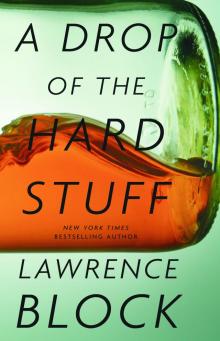 A Drop of the Hard Stuff
A Drop of the Hard Stuff The Canceled Czech
The Canceled Czech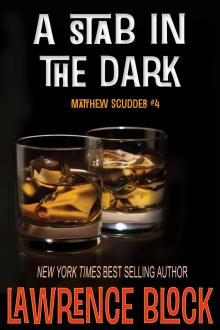 Even the Wicked
Even the Wicked Me Tanner, You Jane
Me Tanner, You Jane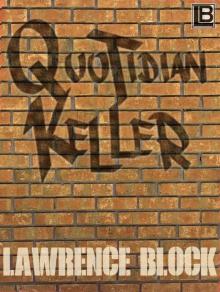 Quotidian Keller
Quotidian Keller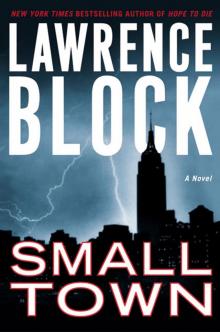 Small Town
Small Town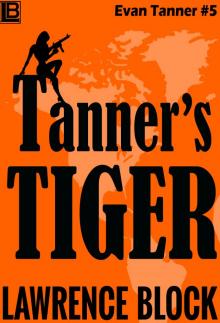 Tanners Tiger
Tanners Tiger A Walk Among the Tombstones
A Walk Among the Tombstones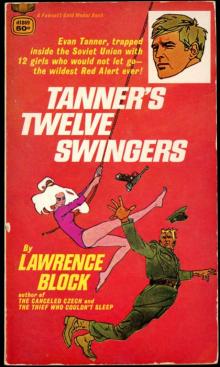 Tanners Twelve Swingers
Tanners Twelve Swingers Gym Rat & the Murder Club
Gym Rat & the Murder Club Everybody Dies
Everybody Dies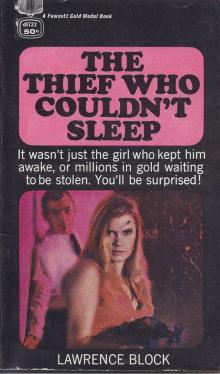 The Thief Who Couldnt Sleep
The Thief Who Couldnt Sleep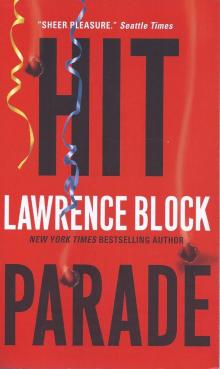 Hit Parade
Hit Parade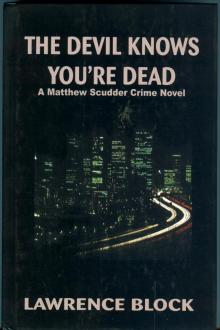 The Devil Knows Youre Dead
The Devil Knows Youre Dead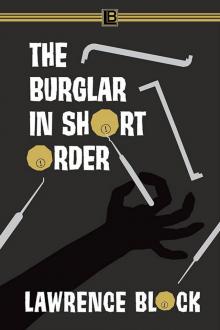 The Burglar in Short Order
The Burglar in Short Order A Long Line of Dead Men
A Long Line of Dead Men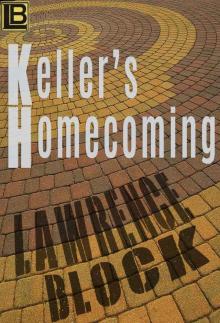 Keller's Homecoming
Keller's Homecoming Resume Speed
Resume Speed Keller's Adjustment
Keller's Adjustment Eight Million Ways to Die
Eight Million Ways to Die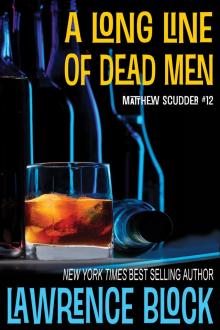 Time to Murder and Create
Time to Murder and Create Out on the Cutting Edge
Out on the Cutting Edge A Dance at the Slaughter House
A Dance at the Slaughter House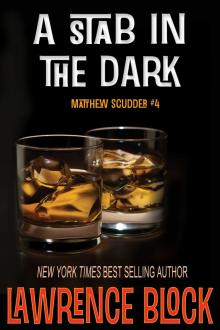 In the Midst of Death
In the Midst of Death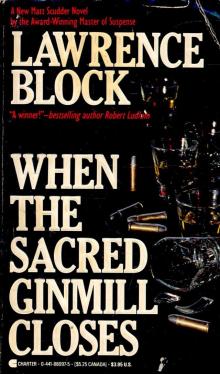 When the Sacred Ginmill Closes
When the Sacred Ginmill Closes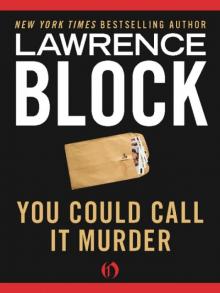 You Could Call It Murder
You Could Call It Murder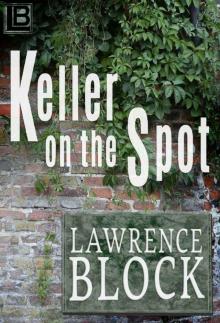 Keller on the Spot
Keller on the Spot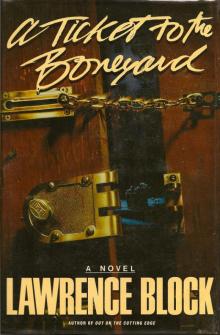 A Ticket to the Boneyard
A Ticket to the Boneyard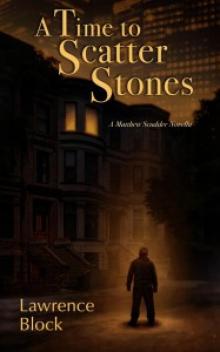 A Time to Scatter Stones
A Time to Scatter Stones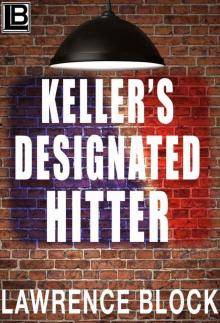 Keller's Designated Hitter
Keller's Designated Hitter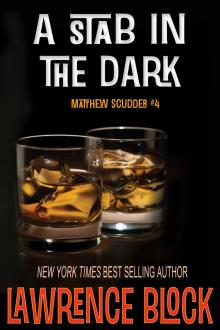 A Stab in the Dark
A Stab in the Dark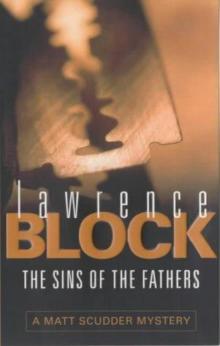 Sins of the Fathers
Sins of the Fathers The Burglar in the Closet
The Burglar in the Closet Burglar Who Dropped In On Elvis
Burglar Who Dropped In On Elvis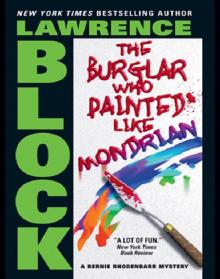 The Burglar Who Painted Like Mondrian
The Burglar Who Painted Like Mondrian The Girl With the Long Green Heart
The Girl With the Long Green Heart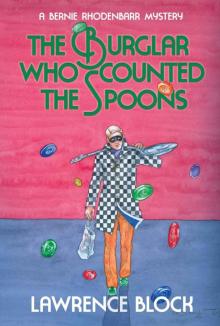 The Burglar Who Counted the Spoons (Bernie Rhodenbarr)
The Burglar Who Counted the Spoons (Bernie Rhodenbarr)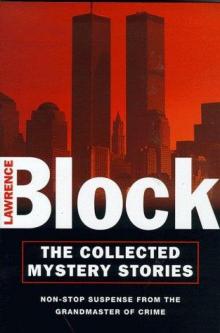 Burglar Who Smelled Smoke
Burglar Who Smelled Smoke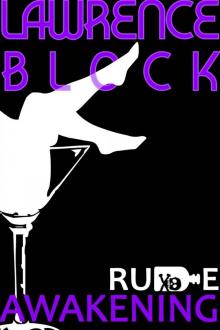 Rude Awakening (Kit Tolliver #2) (The Kit Tolliver Stories)
Rude Awakening (Kit Tolliver #2) (The Kit Tolliver Stories)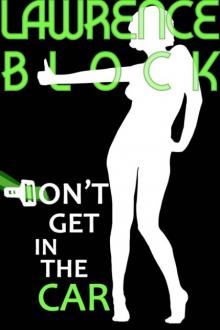 Don't Get in the Car (Kit Tolliver #9) (The Kit Tolliver Stories)
Don't Get in the Car (Kit Tolliver #9) (The Kit Tolliver Stories) CH04 - The Topless Tulip Caper
CH04 - The Topless Tulip Caper You Can Call Me Lucky (Kit Tolliver #3) (The Kit Tolliver Stories)
You Can Call Me Lucky (Kit Tolliver #3) (The Kit Tolliver Stories) CH02 - Chip Harrison Scores Again
CH02 - Chip Harrison Scores Again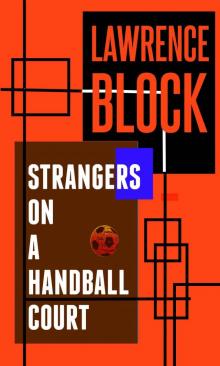 Strangers on a Handball Court
Strangers on a Handball Court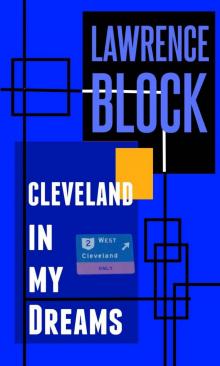 Cleveland in My Dreams
Cleveland in My Dreams Clean Slate (Kit Tolliver #4) (The Kit Tolliver Stories)
Clean Slate (Kit Tolliver #4) (The Kit Tolliver Stories)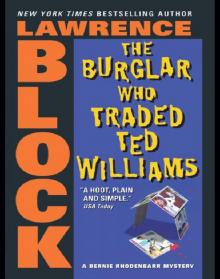 The Burglar Who Traded Ted Williams
The Burglar Who Traded Ted Williams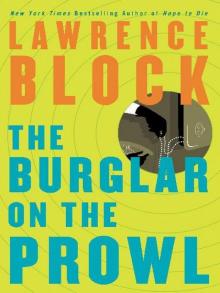 Burglar on the Prowl
Burglar on the Prowl In For a Penny (A Story From the Dark Side)
In For a Penny (A Story From the Dark Side)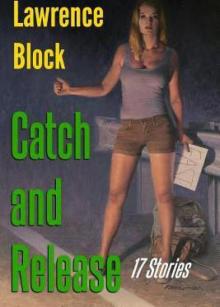 Catch and Release Paperback
Catch and Release Paperback Ride A White Horse
Ride A White Horse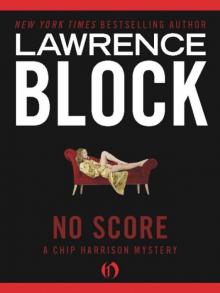 No Score
No Score Looking for David (A Matthew Scudder Story Book 7)
Looking for David (A Matthew Scudder Story Book 7)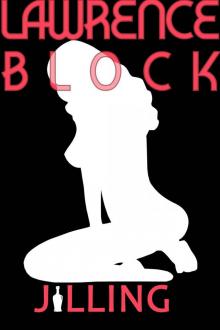 Jilling (Kit Tolliver #6) (The Kit Tolliver Stories)
Jilling (Kit Tolliver #6) (The Kit Tolliver Stories)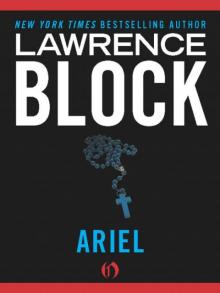 Ariel
Ariel Enough Rope
Enough Rope Grifter's Game
Grifter's Game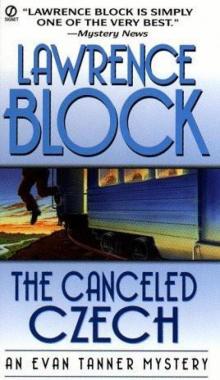 Canceled Czech
Canceled Czech Unfinished Business (Kit Tolliver #12) (The Kit Tolliver Stories)
Unfinished Business (Kit Tolliver #12) (The Kit Tolliver Stories)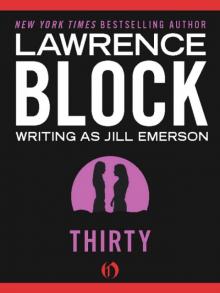 Thirty
Thirty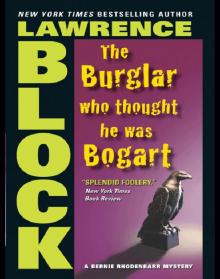 The Burglar Who Thought He Was Bogart
The Burglar Who Thought He Was Bogart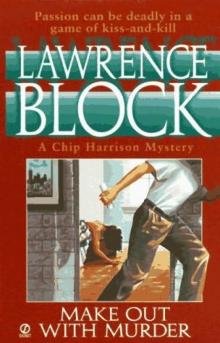 Make Out with Murder
Make Out with Murder One Last Night at Grogan's (A Matthew Scudder Story Book 11)
One Last Night at Grogan's (A Matthew Scudder Story Book 11)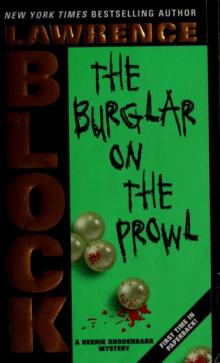 The Burglar on the Prowl
The Burglar on the Prowl Welcome to the Real World (A Story From the Dark Side)
Welcome to the Real World (A Story From the Dark Side) Keller 05 - Hit Me
Keller 05 - Hit Me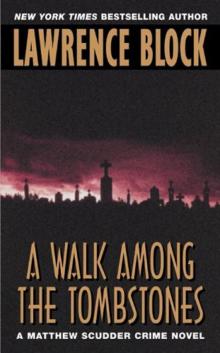 Walk Among the Tombstones: A Matthew Scudder Crime Novel
Walk Among the Tombstones: A Matthew Scudder Crime Novel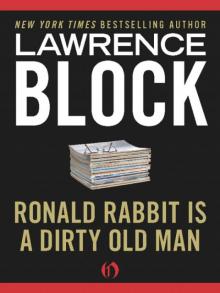 Ronald Rabbit Is a Dirty Old Man
Ronald Rabbit Is a Dirty Old Man The Burglar Who Studied Spinoza
The Burglar Who Studied Spinoza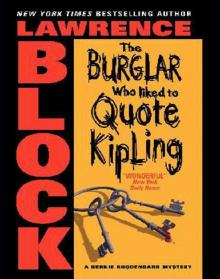 The Burglar Who Liked to Quote Kipling
The Burglar Who Liked to Quote Kipling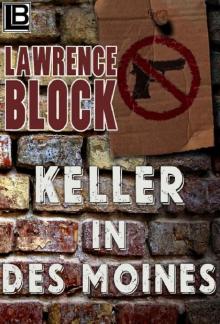 Keller in Des Moines
Keller in Des Moines Hit List
Hit List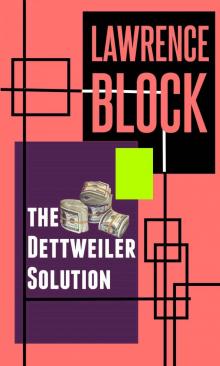 The Dettweiler Solution
The Dettweiler Solution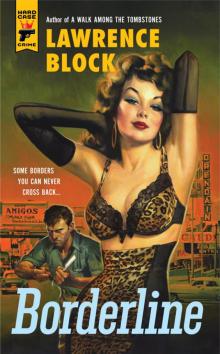 HCC 115 - Borderline
HCC 115 - Borderline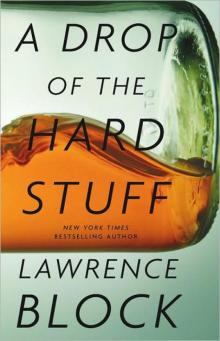 A Drop of the Hard Stuff: A Matthew Scudder Novel
A Drop of the Hard Stuff: A Matthew Scudder Novel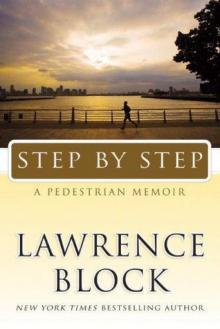 Step by Step
Step by Step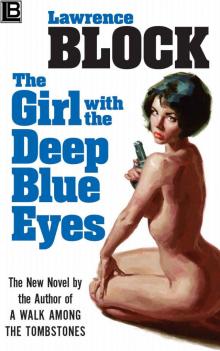 The Girl With the Deep Blue Eyes
The Girl With the Deep Blue Eyes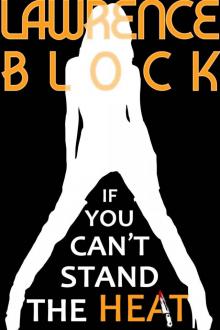 If You Can't Stand the Heat (Kit Tolliver #1) (The Kit Tolliver Stories)
If You Can't Stand the Heat (Kit Tolliver #1) (The Kit Tolliver Stories)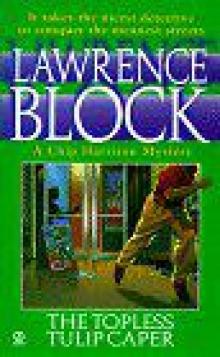 The Topless Tulip Caper
The Topless Tulip Caper Dolly's Trash & Treasures (A Story From the Dark Side)
Dolly's Trash & Treasures (A Story From the Dark Side) The Triumph of Evil
The Triumph of Evil Fun with Brady and Angelica (Kit Tolliver #10 (The Kit Tolliver Stories)
Fun with Brady and Angelica (Kit Tolliver #10 (The Kit Tolliver Stories) Burglars Can't Be Choosers
Burglars Can't Be Choosers Who Knows Where It Goes (A Story From the Dark Side)
Who Knows Where It Goes (A Story From the Dark Side) Deadly Honeymoon
Deadly Honeymoon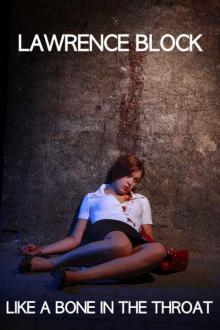 Like a Bone in the Throat (A Story From the Dark Side)
Like a Bone in the Throat (A Story From the Dark Side) A Chance to Get Even (A Story From the Dark Side)
A Chance to Get Even (A Story From the Dark Side) The Boy Who Disappeared Clouds
The Boy Who Disappeared Clouds Collecting Ackermans
Collecting Ackermans Waitress Wanted (Kit Tolliver #5) (The Kit Tolliver Stories)
Waitress Wanted (Kit Tolliver #5) (The Kit Tolliver Stories)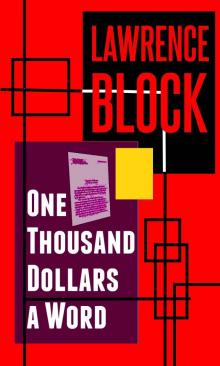 One Thousand Dollars a Word
One Thousand Dollars a Word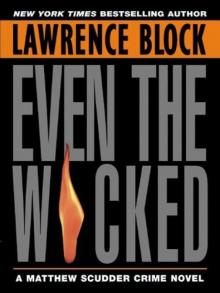 Even the Wicked: A Matthew Scudder Novel (Matthew Scudder Mysteries)
Even the Wicked: A Matthew Scudder Novel (Matthew Scudder Mysteries)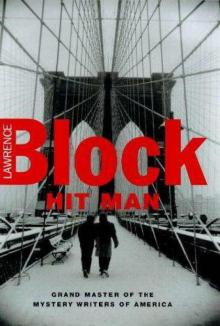 Hit Man
Hit Man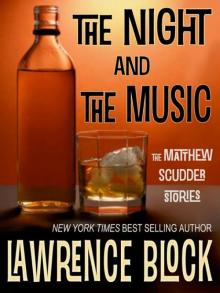 The Night and The Music
The Night and The Music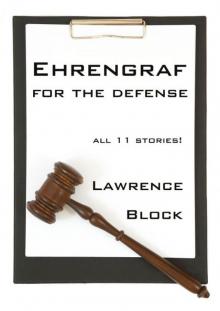 Ehrengraf for the Defense
Ehrengraf for the Defense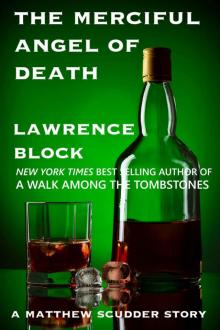 The Merciful Angel of Death (A Matthew Scudder Story Book 5)
The Merciful Angel of Death (A Matthew Scudder Story Book 5)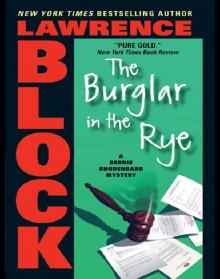 The Burglar in the Rye
The Burglar in the Rye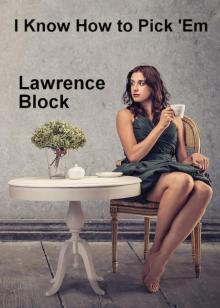 I Know How to Pick 'Em
I Know How to Pick 'Em Getting Off hcc-69
Getting Off hcc-69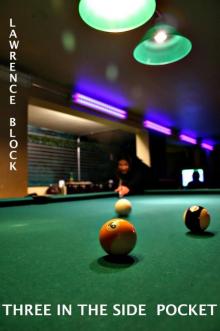 Three in the Side Pocket (A Story From the Dark Side)
Three in the Side Pocket (A Story From the Dark Side)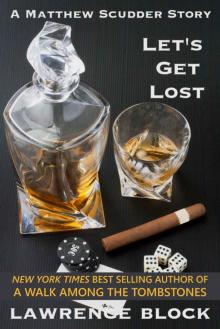 Let's Get Lost (A Matthew Scudder Story Book 8)
Let's Get Lost (A Matthew Scudder Story Book 8) Strange Are the Ways of Love
Strange Are the Ways of Love MOSTLY MURDER: Till Death: a mystery anthology
MOSTLY MURDER: Till Death: a mystery anthology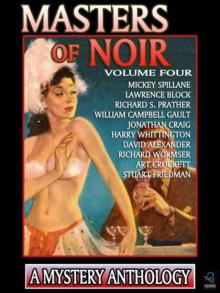 Masters of Noir: Volume Four
Masters of Noir: Volume Four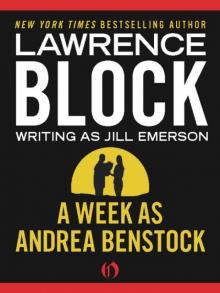 A Week as Andrea Benstock
A Week as Andrea Benstock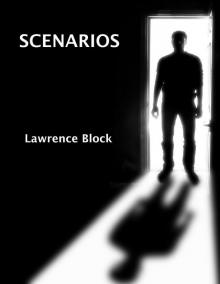 Scenarios (A Stoiry From the Dark Side)
Scenarios (A Stoiry From the Dark Side)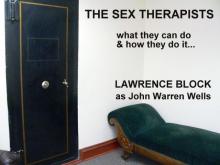 The Sex Therapists: What They Can Do and How They Do It (John Warren Wells on Sexual Behavior Book 15)
The Sex Therapists: What They Can Do and How They Do It (John Warren Wells on Sexual Behavior Book 15)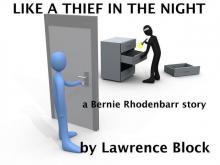 Like a Thief in the Night: a Bernie Rhodenbarr story
Like a Thief in the Night: a Bernie Rhodenbarr story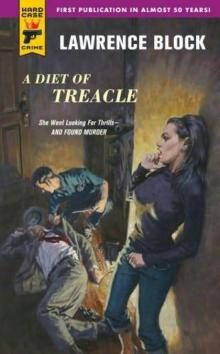 A Diet of Treacle
A Diet of Treacle Community of Women
Community of Women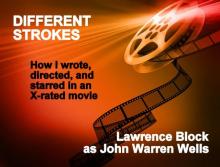 Different Strokes: How I (Gulp!) Wrote, Directed, and Starred in an X-rated Movie (John Warren Wells on Sexual Behavior)
Different Strokes: How I (Gulp!) Wrote, Directed, and Starred in an X-rated Movie (John Warren Wells on Sexual Behavior) You Don't Even Feel It (A Story From the Dark Side)
You Don't Even Feel It (A Story From the Dark Side) Zeroing In (Kit Tolliver #11) (The Kit Tolliver Stories)
Zeroing In (Kit Tolliver #11) (The Kit Tolliver Stories) The Wife-Swap Report (John Warren Wells on Sexual Behavior)
The Wife-Swap Report (John Warren Wells on Sexual Behavior) Keller's Fedora (Kindle Single)
Keller's Fedora (Kindle Single) Speaking of Lust
Speaking of Lust Everybody Dies (Matthew Scudder)
Everybody Dies (Matthew Scudder) Defender of the Innocent: The Casebook of Martin Ehrengraf
Defender of the Innocent: The Casebook of Martin Ehrengraf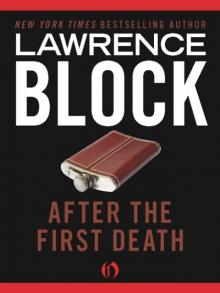 After the First Death
After the First Death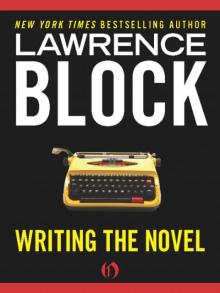 Writing the Novel
Writing the Novel How Far - a one-act stage play
How Far - a one-act stage play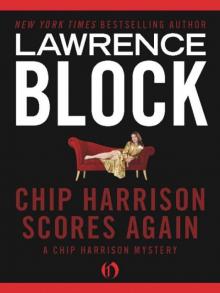 Chip Harrison Scores Again
Chip Harrison Scores Again The Topless Tulip Caper ch-4
The Topless Tulip Caper ch-4 The Crime of Our Lives
The Crime of Our Lives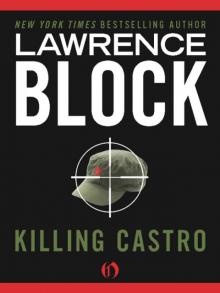 Killing Castro
Killing Castro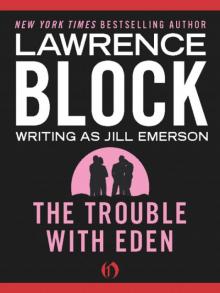 The Trouble with Eden
The Trouble with Eden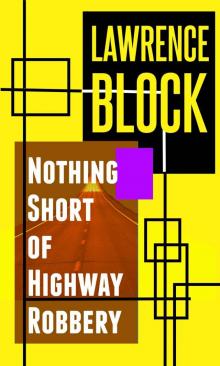 Nothing Short of Highway Robbery
Nothing Short of Highway Robbery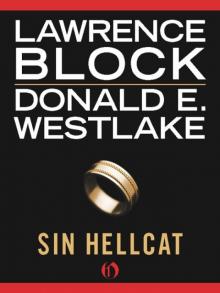 Sin Hellcat
Sin Hellcat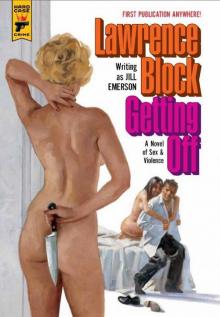 Getting Off: A Novel of Sex & Violence (Hard Case Crime)
Getting Off: A Novel of Sex & Violence (Hard Case Crime) Coward's Kiss
Coward's Kiss Alive in Shape and Color
Alive in Shape and Color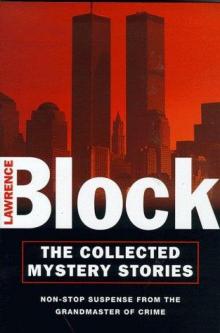 Blow for Freedom
Blow for Freedom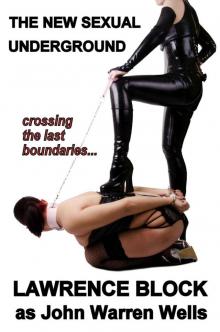 The New Sexual Underground: Crossing the Last Boundaries (John Warren Wells on Sexual Behavior Book 10)
The New Sexual Underground: Crossing the Last Boundaries (John Warren Wells on Sexual Behavior Book 10)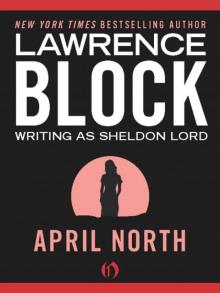 April North
April North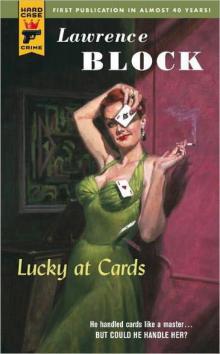 Lucky at Cards
Lucky at Cards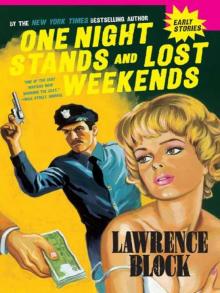 One Night Stands; Lost weekends
One Night Stands; Lost weekends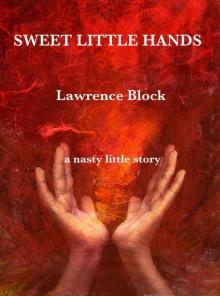 Sweet Little Hands (A Story From the Dark Side)
Sweet Little Hands (A Story From the Dark Side)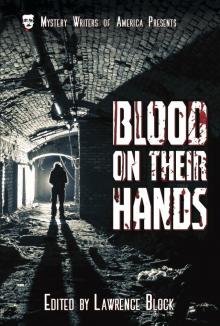 Blood on Their Hands
Blood on Their Hands A Dance at the Slaughterhouse
A Dance at the Slaughterhouse Headaches and Bad Dreams (A Story From the Dark Side)
Headaches and Bad Dreams (A Story From the Dark Side) Keller's Therapy
Keller's Therapy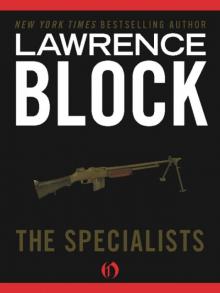 The Specialists
The Specialists Hit and Run jk-4
Hit and Run jk-4 Threesome
Threesome Love at a Tender Age (John Warren Wells on Sexual Behavior)
Love at a Tender Age (John Warren Wells on Sexual Behavior)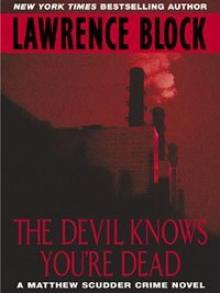 The Devil Knows You're Dead: A MATTHEW SCUDDER CRIME NOVEL
The Devil Knows You're Dead: A MATTHEW SCUDDER CRIME NOVEL Funny You Should Ask
Funny You Should Ask CH01 - No Score
CH01 - No Score Sex and the Stewardess (John Warren Wells on Sexual Behavior)
Sex and the Stewardess (John Warren Wells on Sexual Behavior)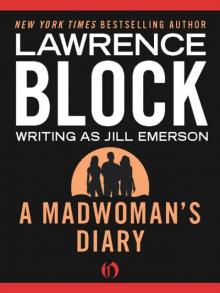 A Madwoman's Diary
A Madwoman's Diary When This Man Dies
When This Man Dies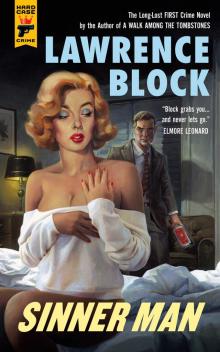 Sinner Man
Sinner Man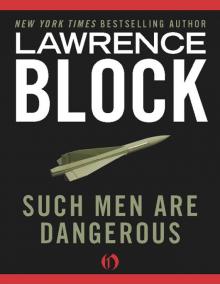 Such Men Are Dangerous
Such Men Are Dangerous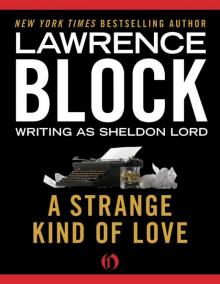 A Strange Kind of Love
A Strange Kind of Love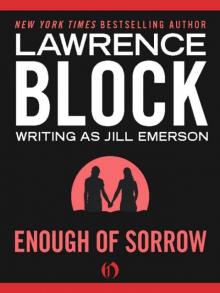 Enough of Sorrow
Enough of Sorrow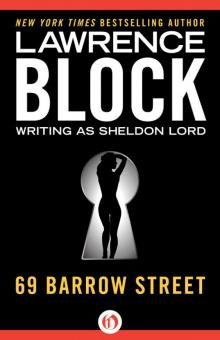 69 Barrow Street
69 Barrow Street A Moment of Wrong Thinking (Matthew Scudder Mysteries Series Book 9)
A Moment of Wrong Thinking (Matthew Scudder Mysteries Series Book 9)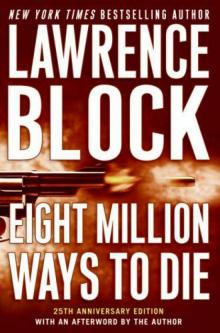 Eight Million Ways to Die ms-5
Eight Million Ways to Die ms-5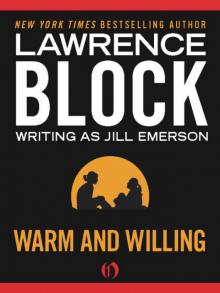 Warm and Willing
Warm and Willing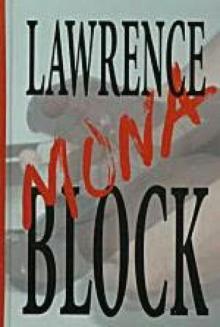 Mona
Mona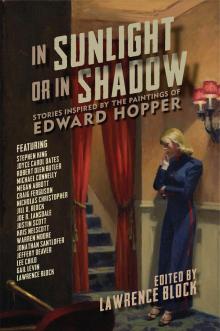 In Sunlight or In Shadow
In Sunlight or In Shadow A Candle for the Bag Lady (Matthew Scudder Book 2)
A Candle for the Bag Lady (Matthew Scudder Book 2)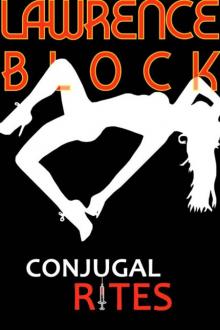 Conjugal Rites (Kit Tolliver #7) (The Kit Tolliver Stories)
Conjugal Rites (Kit Tolliver #7) (The Kit Tolliver Stories) Speaking of Lust - the novella
Speaking of Lust - the novella Gigolo Johnny Wells
Gigolo Johnny Wells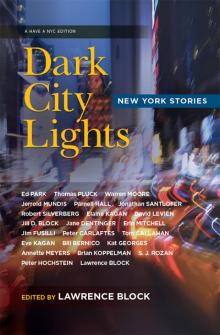 Dark City Lights
Dark City Lights Versatile Ladies: the bisexual option (John Warren Wells on Sexual Behavior)
Versatile Ladies: the bisexual option (John Warren Wells on Sexual Behavior) Passport to Peril
Passport to Peril The Taboo Breakers: Shock Troops of the Sexual Revolution (John Warren Wells on Sexual Behavior)
The Taboo Breakers: Shock Troops of the Sexual Revolution (John Warren Wells on Sexual Behavior) Lucky at Cards hcc-28
Lucky at Cards hcc-28 Campus Tramp
Campus Tramp 3 is Not a Crowd (John Warren Wells on Sexual Behavior)
3 is Not a Crowd (John Warren Wells on Sexual Behavior)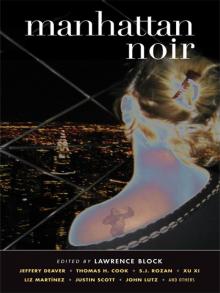 Manhattan Noir
Manhattan Noir The Burglar in the Library
The Burglar in the Library Doing It! - Going Beyond the Sexual Revolution (John Warren Wells on Sexual Behavior Book 13)
Doing It! - Going Beyond the Sexual Revolution (John Warren Wells on Sexual Behavior Book 13)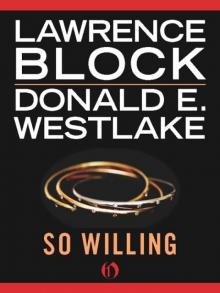 So Willing
So Willing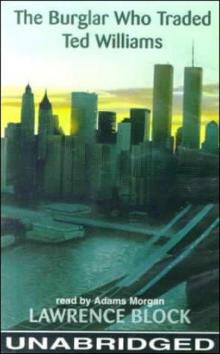 The Burglar Who Traded Ted Williams br-6
The Burglar Who Traded Ted Williams br-6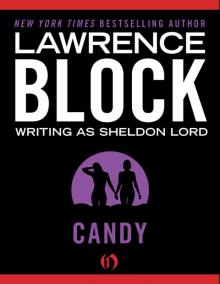 Candy
Candy Sex Without Strings: A Handbook for Consenting Adults (John Warren Wells on Sexual Behavior)
Sex Without Strings: A Handbook for Consenting Adults (John Warren Wells on Sexual Behavior)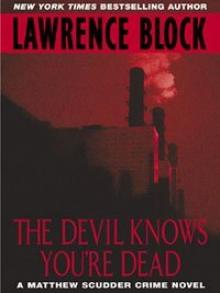 The Devil Knows You're Dead: A MATTHEW SCUDDER CRIME NOVEL (Matthew Scudder Mysteries)
The Devil Knows You're Dead: A MATTHEW SCUDDER CRIME NOVEL (Matthew Scudder Mysteries)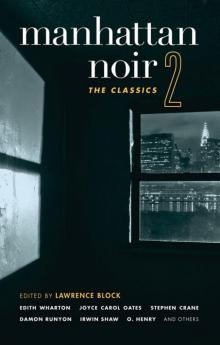 Manhattan Noir 2
Manhattan Noir 2 The Scoreless Thai (aka Two For Tanner)
The Scoreless Thai (aka Two For Tanner)